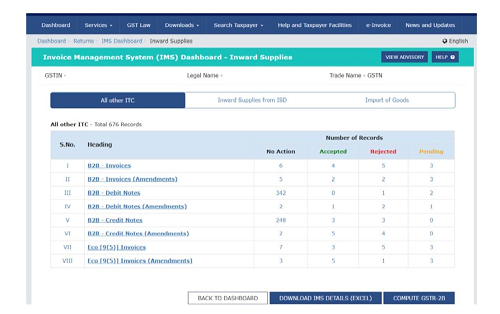The Goods and Services Tax (GST) regime in India is set to undergo a significant change with the introduction of a new Invoice Management System (IMS). This system aims to simplify the process of matching invoices issued by suppliers with those received by recipients, thereby ensuring accurate Input Tax Credit (ITC) claims.
Starting from October 1, 2024, a new Invoice Management System (IMS) will be implemented to streamline the process of matching invoices issued by suppliers and claiming Input Tax Credit (ITC).

How it Works
1. Supplier Invoice Upload: After filing their GSTR-1, suppliers' invoices will be automatically displayed in the IMS for recipients.
2. Recipient Action: Recipients can categorize invoices based on their status:
- No Action Taken: Invoices without any action will be deemed accepted when generating GSTR-2B.
- Accepted: These invoices will be included in GSTR-2B generation.
- Rejected: These invoices will not be considered for GSTR-2B generation.
- Pending: These invoices will be carried forward to subsequent months and will not be included in GSTR-2B.
3. Action Deadline: Recipients must take action on invoices before the 14th of the month to ensure they are considered in the current GSTR-2B generation.
4. Recalculation: If a recipient changes the status of an invoice or takes action after the 14th of the month, they must manually recalculate their GSTR-2B from the IMS dashboard.
Benefits
- Improved accuracy: The IMS will help prevent errors in ITC claims by ensuring accurate invoice matching.
- Increased efficiency: The automated process will reduce the time and effort required for invoice reconciliation.
- Enhanced compliance: The system will help taxpayers stay compliant with GST regulations.






 CAclubindia
CAclubindia

